The San Diego Art Prize exhibition opens at the Central Library Art Gallery this weekend, showcasing new works from the 2022 winners Alida Cervantes, Angélica Escoto, Carlos Castro and Cog•nate Collective.
The San Diego Art Prize was established in 2006 by San Diego Visual Arts Network.
As a culmination and celebration of the prize, the winners present an exhibition together. This year, the exhibition will be on view at the ninth floor gallery at the downtown library. While there's no theme, there are some unintended conversations that seem to happen between the works in the final exhibition.
The cohort represents the binational strength of the region's art scene, and each artist explores power, migration, history and the border. Chi Essary, the San Diego Art Prize administrator and curator, said it's been interesting to see the connections between the pieces.
"The one thing that kind of popped up for me over and over again, looking at their work, is the weight of colonization on the New World. So it comes up in different ways, and they all speak to it from different points of view," Essary said.
Alida Cervantes deconstructs power with portraits
Born in San Diego and raised in Tijuana, artist Alida Cervantes grew up crossing the border. Now, she still crosses the border every day to work in her studio in Tijuana. She studied art at UC San Diego, and also studied painting in Italy.
"I'm interested in power relations, all kinds of power relations between gender, class, race, even species. I'm inspired by Mexican history and also the Mexican present, but also my influence by being in the United States," Cervantes said.
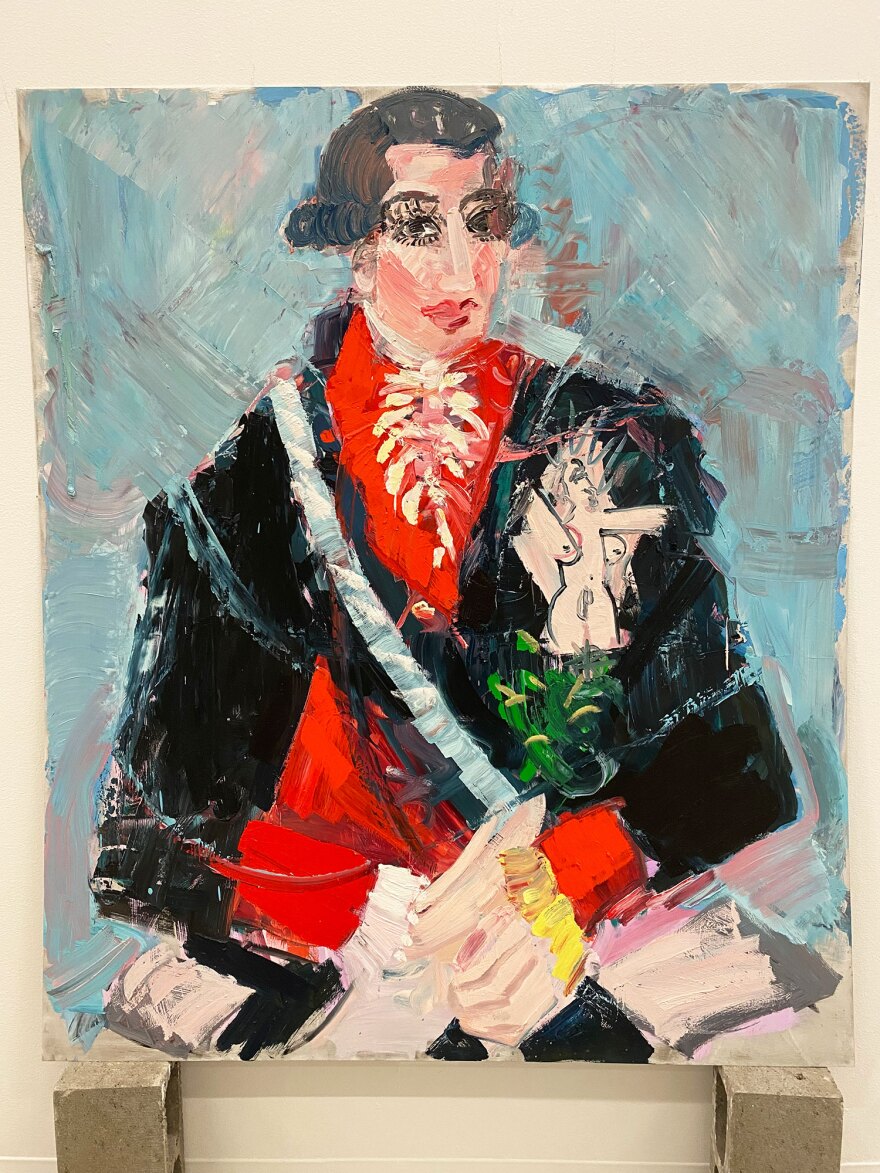
The works Cervantes will show in the San Diego Art Prize exhibition are four oversized oil paintings of Spanish viceroys, the appointed rulers by the sovereign for each colony.
Cervantes uses thick, intentional brush strokes in her portraiture — clearly figurative but still enshrouded in interpretations that play with the physical marks of power. Nudity threads through each portrait, mostly in the form of a torso or breasts painted onto their regal uniforms.
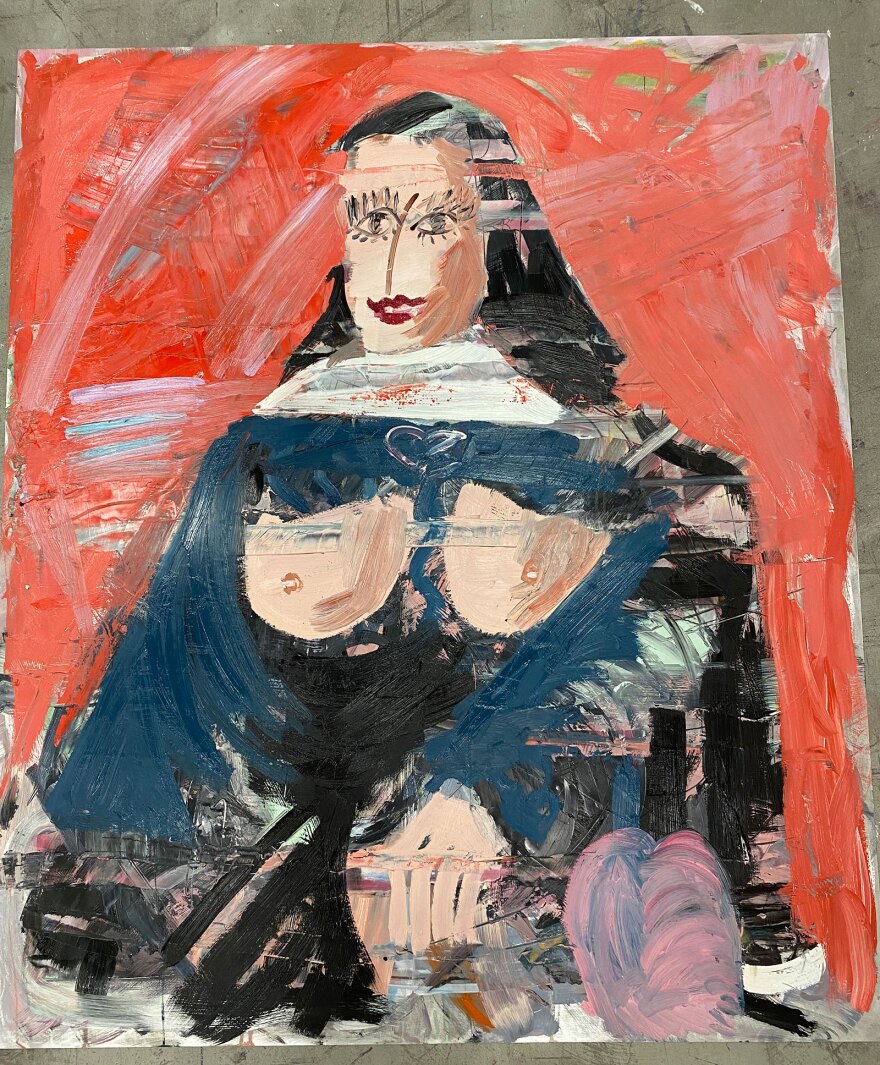
"These portraits of these men — they represent a lot of the things that I think the society right now wants to deconstruct in terms of gender and race and class," she said. "These portraits represent where the power has derived for many centuries."
Carlos Castro finds creativity in monument destruction
Interdisciplinary artist Carlos Castro, also known as Carlos Castro Arias, teaches art at San Diego State University and was born in Bogota, Colombia.
For the Art Prize exhibition, Castro will show a series of new works about contested and removed monuments in Colombia. During the last few years, indigenous people and allies demonstrated in plazas, protesting memorials for Christopher Columbus or Queen Isabella, some of which were damaged or taken down. Castro covered fragments of these with indigenous Inga symbols and beading.
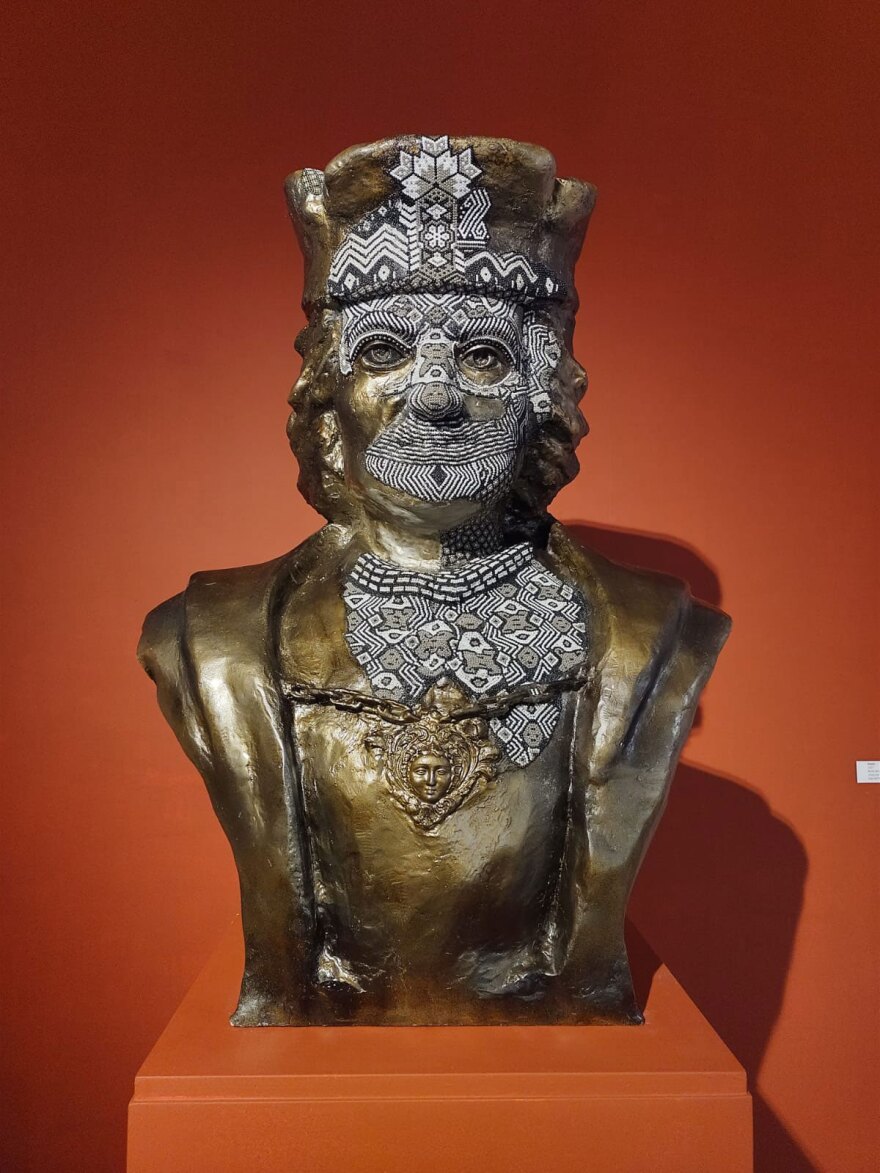
Castro is interested in connections, transformations and what counts as art. The monuments taken down were beautiful sculptures, Castro said. When the monuments — even in slightly macabre fragments — are adorned with beautiful beadwork of the indigenous community, they become new.
"It's interesting to see that process of transformation of ideas, or how can they also convert into something different. In this case, when I covered them with the beads they are telling, at the same time, two stories. You are seeing the story of the bronze statue, and you also see details or the handcraft work of people covering them," Castro said.
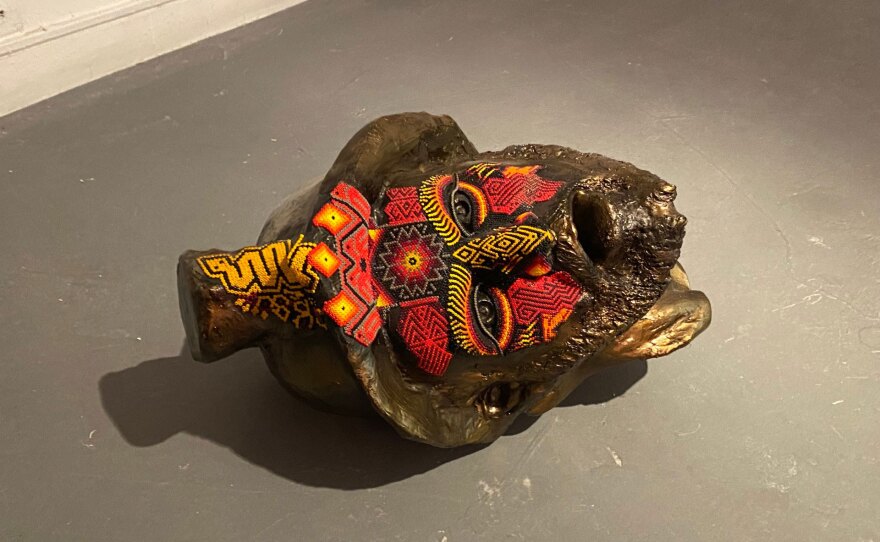
Cog•nate Collective broadcasts stories from the border, at the border
Cog•nate Collective is a collaboration of artists Misael Diaz and Amy Sanchez Arteaga, who've been working together since they met as editors of a Latino/a/x-Chicano/a/x student newspaper at UCLA.
For the Art Prize exhibition, they're revisiting their 10-year-old "Border Blasters" project. It began as a pirate radio broadcast at the San Ysidro port of entry, where both artists spent a lot of time crossing as children.
Cog•nate Collective collected stories from people recently deported and living in migrant shelters in Tijuana and elsewhere in Mexico. Then, they crafted these conversations and stories into scripts — more abridged, often poetic renderings of the stories — because it felt important to the artists to not use the voices of the migrants, in consideration of their safety.
They then asked people waiting in the pedestrian line to cross the border to read those scripts. The recordings were broadcast as part of the "Border Blaster" project, and will be an audio installation in the exhibition.
"The people who told us these stories were telling us this migration story as the pedestrians who are waiting in line were also undertaking this form of migration, albeit in a very different way," Sanchez Arteaga said.
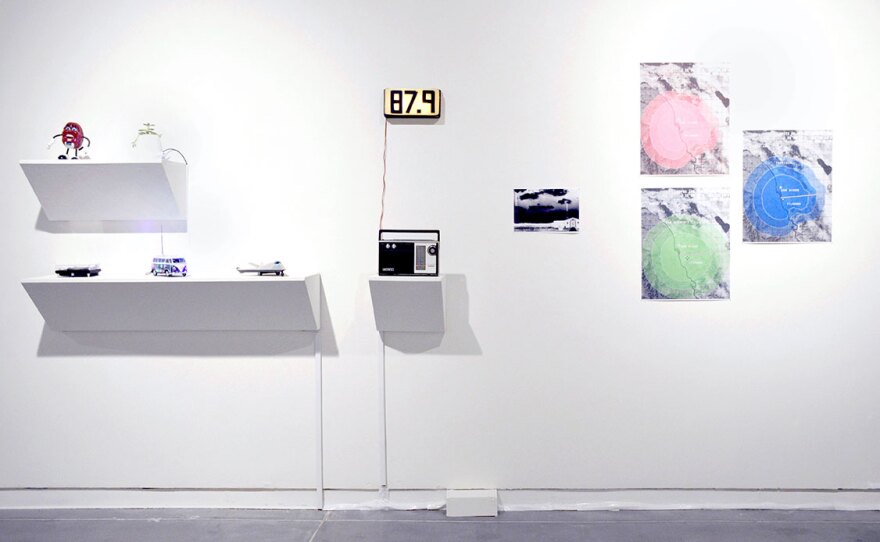
Another project in the exhibition is "Border Cameos," a silent video that combines portrayals of the border in movies and television (one example is in an "I Love Lucy" episode) with found footage from home videos. They're also showing an installation of candles inscribed with prayers for protection for migrants.
"For us it became important to reflect and also think about the various ways that exist across the borders. What are the mechanisms that prevent or that force certain bodies to undertake those types of journeys versus other bodies that are able to just sit in a car or just wait on foot and across the border," Diaz said.
Angélica Escoto tells migration stories of American stuff
Tijuana-based multidisciplinary photographer Angélica Escoto has a background in journalism, evident in the two documentary photography series she's showing in the Art Prize exhibition. Escoto's photography is vivid, intimate and propulsive — capturing an unassuming but piercing stillness.
The first series is Escoto's "Ellas no bailan solas," which documents the quinceañera parties of Mexican migrants living in San Diego. Young women, shown in brightly colored dresses, are suspended in time, some moving or looking at their phone, and some caught smiling at the camera in a fleeting moment of calm.
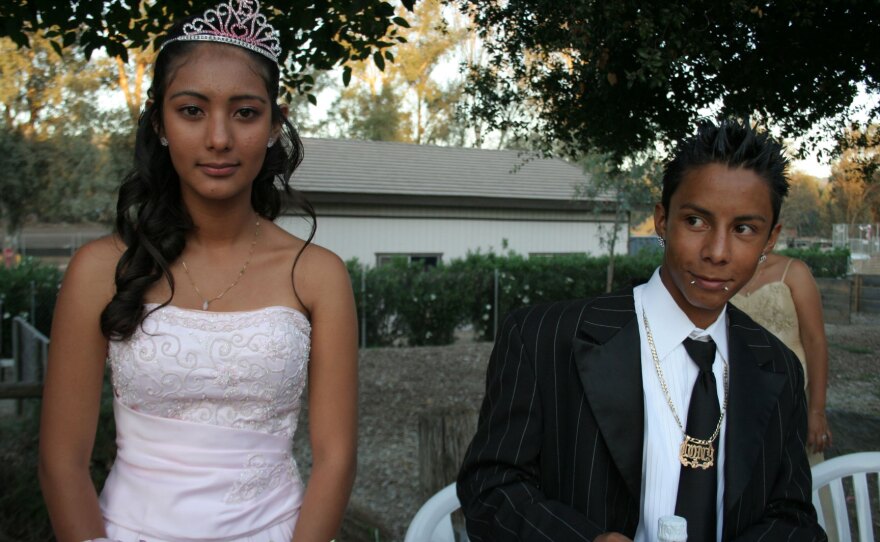
She's also exhibiting "Shopping in Tijuana," a series of photographs of American clothing and consumer goods that ultimately end up resold across the border.
"Son las sobre la ropa y objetos de segunda que migra de Estados Unidos hacia Tijuana y representan en su paisaje una arquelogía contemporánea del recorrido social de estos objetos," Escoto told KPBS over email in Spanish. "They are about second-hand clothes and objects that migrate from the United States to Tijuana and represent in their landscape a contemporary archeology of the social journey of these objects."
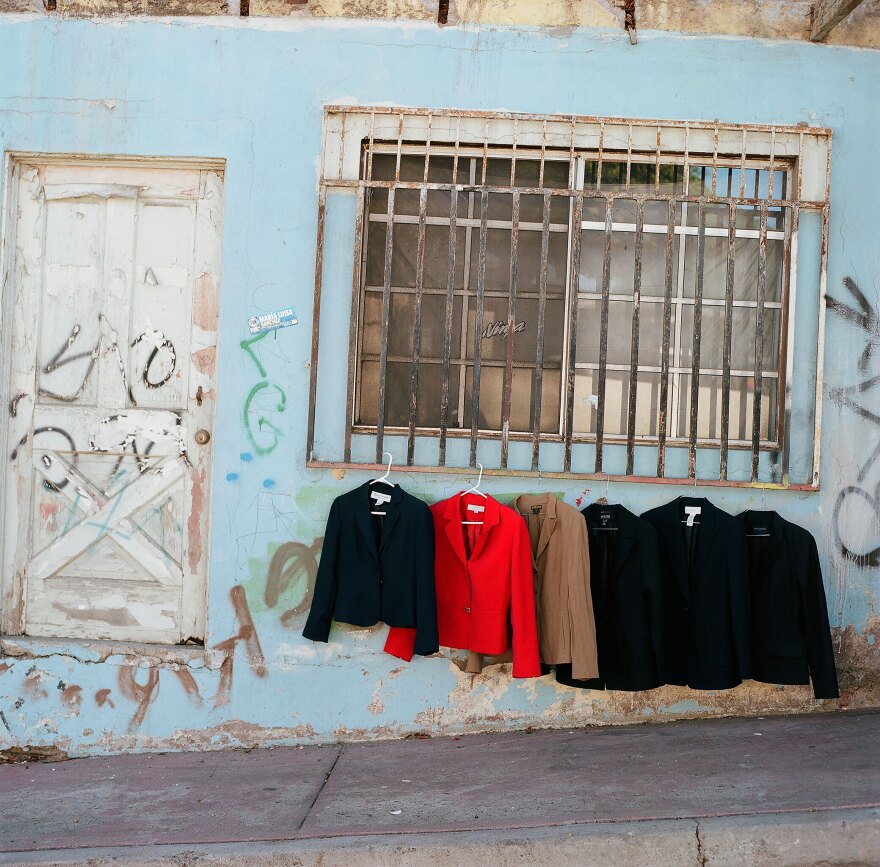
Escoto stressed that the recognition of the Art Prize can bring needed awareness to border artists both in San Diego and throughout Mexico.
"Para mi es muy importante porque tengo trabajando muchos años y para nosotros los artistas mexicanos en el Norte de Mexico es también difícil que nos reconozcan en el centro del pais," Escoto said. "For me it is very important because I have been working for many years and for us Mexican artists in the North of Mexico it is also difficult for us to be recognized in the center of the country."
For this year's San Diego Art Prize, leading curators from outside San Diego selected the winners from a broad pool of locally nominated finalists. The curators — San Francisco MOMA's Jovanna Venegas, the Whitney's Marcela Guerrero, Frost Art Museum in Florida's Amy Galpin, and the Mexico City- and Vienna-based independent curator José Springer — were enlisted in part to help broaden the impact of San Diego's art scene.
The San Diego Art Prize exhibition opens Sept. 17, 2022 at the Central Library Art Gallery downtown, and is on view through Jan. 7, 2023.







